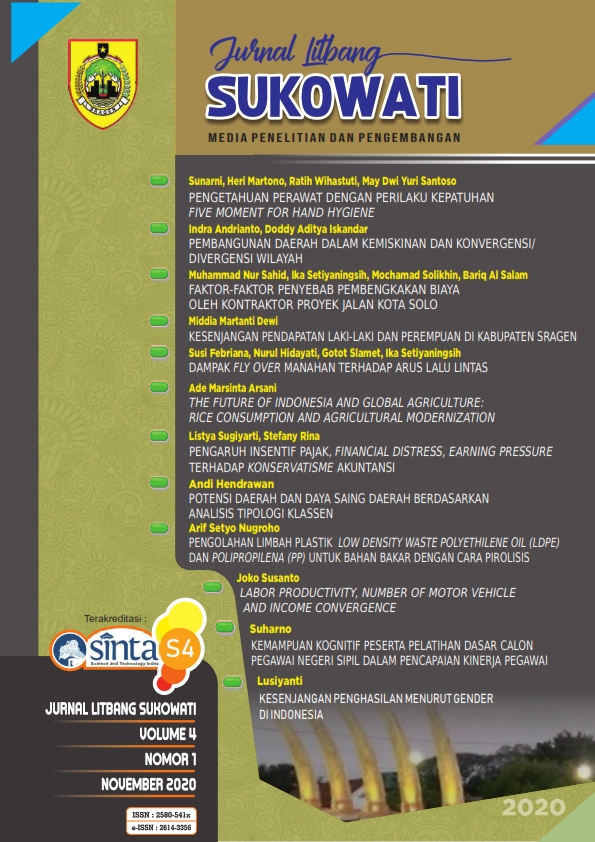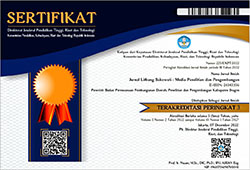LABOR PRODUCTIVITY, NUMBER OF MOTOR VEHICLE AND INCOME CONVERGENCE
DOI:
https://doi.org/10.32630/sukowati.v4i1.181Keywords:
convergence, income, productivity, motor vehicleAbstract
This research examines the occurrence of income convergence in the Surakarta Ex-Residency. Data included per capita income, labor productivity, and the number of motor vehicles published by the Central Bureau of Statistics (BPS) from 2001-2018. The research model was formed by adding several control variables to form a regression equation where the current year's per capita income was dependent. In contrast, the preceding year's per capita income, labor productivity, and the number of motor vehicles were independent variables. Subsequently, the regression equation was estimated by the Dynamic Ordinary Least Square (DOLS) and Fully Modified Ordinary Least Square (FMOLS) methods. The results showed a convergence of per capita income among regions. The income in more impoverished regions grew faster compared to wealthier ones. For this reason, the gap in income per capita between regions lessened significantly. Increased labor productivity and the number of motor vehicles had a positive effect on per capita income, supporting income convergence. Therefore, the transportation network needs to be improved by the government to support the mobility of workers and goods, leading to income convergence.
Downloads
Published
How to Cite
Issue
Section
License
Copyright (c) 2020 Joko Susanto

This work is licensed under a Creative Commons Attribution 4.0 International License.


















